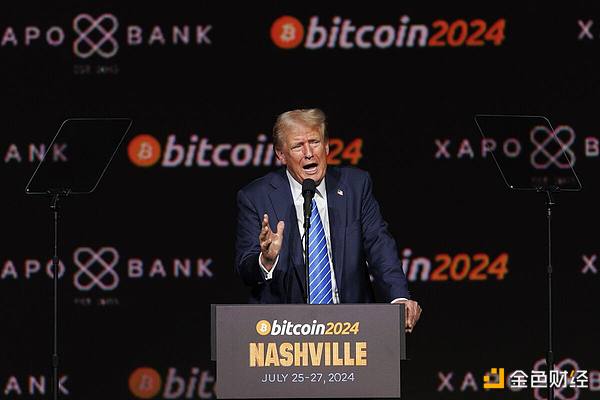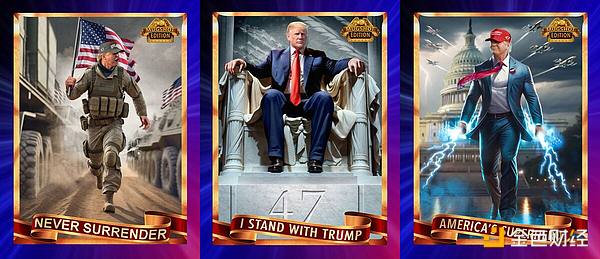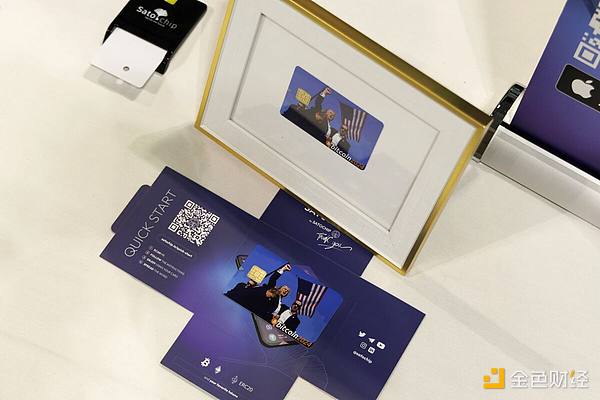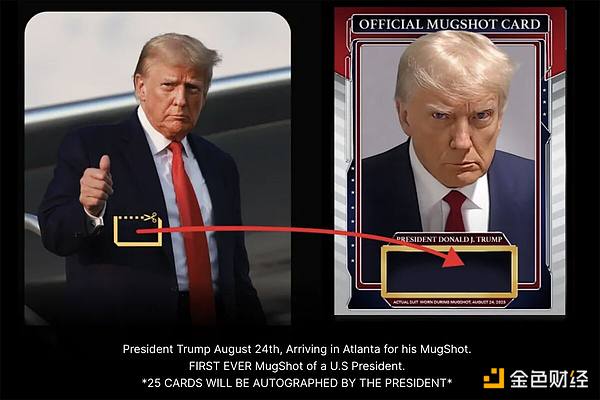Author: Olga Kharif, Stephanie Lai, David Pan, Teresa Xie, Bloomberg; Translated by: Baishui, Jinse Finance
This was supposed to be a cryptocurrency conference, but it could easily be mistaken for a Trump rally.
At an event where vendors hawked red hats with the words “Make Bitcoin Great Again” on them, the crowd broke into applause when Donald Trump vowed to fire Securities and Exchange Commission Chairman Gary Gensler and replace him with a regulator who loves the digital asset industry if he returns to the White House.
“I promise the Bitcoin community that the day I’m sworn in, the anti-crypto campaign of Joe Biden, Kamala Harris will end,” Trump said at the Bitcoin 2024 conference in Nashville on Saturday, comparing cryptocurrency to the steel industry a century ago. “If Bitcoin is going to the moon,” he added, “I want America to be the country that leads the way.”
The speech marked a radical shift in the former president’s stance on an asset class that he viewed as a crime-ridden scam during his tenure. It also marked a growing merger of a once-outsider political machine with an outsider financial movement that is also struggling to enter the mainstream.

Donald Trump speaks at the Bitcoin 2024 conference in Nashville on July 27. Trump was once a cryptocurrency critic, but his attitude has changed since he began selling NFTs. Photographer: Brett Carlsen/Bloomberg
Conventional wisdom holds that this strategy is just classic Trumpian trading. He needs votes and money in a presidential race that now looks like it will be a close one, and he is taking advantage of the opportunity created by President Biden’s administration alienating the crypto crowd by cracking down on the industry.
If so, it worked. The cryptocurrency ecosystem’s public image, dominated by deep-pocketed cyberwarriors, provided fertile ground for Trump to reap tens of millions of campaign dollars and a growing army of devoted fans. His newfound role as an industry cheerleader helped him secure endorsements from the likes of Dogecoin enthusiast Elon Musk, billionaire twins Tyler and Cameron Winklevoss and venture capitalists Marc Andreessen and Ben Horowitz.
“As the Bitcoin Conference demonstrates, President Trump wants our country to reclaim its place as a global leader in technology, innovation, and manufacturing, ” said Brian Hughes, a senior campaign adviser. “That includes cryptocurrency and more.”
All the donations and noise in the cryptocurrency space have not gone unnoticed by the other party. Bitcoin fans on X circulated a letter allegedly signed by more than two dozen Democratic lawmakers and candidates. The letter, addressed to the party’s national committee, urged a more moderate stance on digital assets.
Yet even as Trump is enjoying all the newfound support, something else has played a major role in his transformation into a cryptocurrency believer: polishing his own image. In short, he fell in love with Trump-themed non-fungible tokens — and the supporters who bought them — and that enthusiasm has translated into a broader appreciation for the industry, according to insiders who have been following the evolution of Trump’s cryptocurrency.
Trump’s questions about digital asset valuations haven’t slowed his NFT sales pitch, as was evident in May when he gave an impromptu gathering of supporters at Mar-a-Lago who bought at least 47 digital trading cards — pop art renderings of the former president, including images of him dressed as cowboys, superheroes and other fantasy characters.
They were sold for $99 each, but Trump wondered aloud if he could buy more.
"There's a big difference between $99 and $499, $599, maybe even $1,000, I don't know," he told the crowd, according to video footage of the event, which was held on a break from his hush money criminal trial in New York. "But I don't want to do that. I want to keep it. Now, nobody's going to believe it, they're going to say 'Oh, this guy is talking bullshit.'"
Not long ago, Trump himself criticized cryptocurrency promoters for talking nonsense, accusing Bitcoin and other tokens of facilitating crime and criticizing valuations during his presidency as "coming out of thin air." However, between that tweet and the time he and his wife Melania began selling NFTs, Trump changed his mind.
“Trump’s NFT really put him in front of the crypto people for the first time,” said Kristin Smith, CEO of the Blockchain Association, a trade group that has been one of the liaisons between the Trump campaign and the cryptocurrency industry.
For an industry mired in scandal and facing a near existential threat amid a deluge of government legal action, Trump’s erratic back-and-forth on cryptocurrency may have made him one of the superheroes of NFTs. And for Trump, the topic gives him another entry point to attack his Democratic opponents — an uneven one given the industry’s enthusiasm for getting out the vote and unprecedented related fundraising numbers. The pro-cryptocurrency Fairshake PAC and two allied super PACs have raised $170 million in the current round, even as they focus on congressional races and donate to both parties.
Trump’s symbiotic relationship with the industry was on display in Nashville: As cryptocurrency fans cheered the prospect of a friendlier regulatory environment, Trump solicited big donations from them. He charged $844,600 for a seat at a cryptocurrency “roundtable” and $60,000 per person — $100,000 per couple — for a photo op. Mike Belshe, CEO of the cryptocurrency company BitGo, is hosting a fundraiser in Palo Alto, California, on Monday to raise more money.
For all the crypto celebrities hanging out with Trump these days, there are a few lesser-known figures who deserve credit — or blame — for being Trump’s guides into the strange rabbit hole that is digital assets.
The first is Bill Zanker , founder of the adult education company The Learning Annex and co-author of the 2007 book "Thinking Big and Kicking Ass with Trump." Zanker said he is a longtime friend of Trump and had invited Trump to be a speaker at the Learning Annex.
Zunk said in an interview that he approached Trump about two and a half years ago to pitch him an idea: NFT artwork featuring cartoons of the former president. Zunk recalled that Trump was interested but didn't want to call them NFTs.
“I like to call them digital trading cards on a computer,” Zanke said Trump told him. “If you call them NFTs, people just can’t understand it.”
Then came the collapse of Sam Bankman-Fried’s FTX exchange and a string of other industry bankruptcies in 2022 — a sequence that left millions of people victimized and led to a crackdown on the industry by the Biden administration. In December 2022, in the middle of what he calls “crypto winter,” Zanke came to Mar-a-Lago and asked, “Mr. President, do you still want to do this?” He said, “Bill, you know, a lot of my friends say I shouldn’t do this. But I like it, so let’s do it.”

Trump's role in the project was far from passive. "Every picture, he approved," Zanker said. "He spent hours studying it. He loved it. He called it pop art," he said, adding that the project inspired Trump to spend time researching cryptocurrencies, asking lots of questions that helped him understand topics like how the Ethereum blockchain works.
The NFTs were a huge success, with each new collection selling out within hours, according to Zanke. Two subsequent events were held at Mar-a-Lago, one late last year and another in May, where Trump met and greeted buyers.
“He fell in love with the crowd: young, ambitious, unregulated,” Zunker said. “Someone asked him, ‘What do you think of crypto?’ He said, ‘I like it, and I don’t like it all going overseas.’ And of course, the crowd went wild.”
At one point, Trump called his friend to the stage when the topic of accepting campaign donations in the form of cryptocurrency came up.
“‘Zanker, should we accept crypto donations?’ ” Zanker recalled Trump asking at the time. “And I said yes. He became the crypto president.” So far, the campaign says it has raised more than $4 million in cryptocurrency donations, in addition to millions more in traditional donations from industry supporters. According to Zanker, the Trump trading card NFTs (nearly 200,000 in total, spread across three collections) have brought in more than $20 million for Trump and his partners, but he declined to say how the revenue was divided up.
The industry’s pursuit of Trump — and his pursuit of potential donors who have become wealthy through cryptocurrency — has continued to grow in the wake of the NFT event.
The next big event was in June in the tea room at Mar-a-Lago , where Trump and his guests ate cookies and attracted a small crowd of executives from crypto miners, the companies whose massive, high-tech data centers facilitate transactions on blockchains in exchange for payments in bitcoin or other cryptocurrencies.
“We talked about how to get bitcoin users involved in the political process,” said Brian Morgenstern, head of public policy at miner Riot Platforms Inc., who previously worked in the White House and Treasury Department during the Trump administration. “If you’re not engaged, if you don’t talk to the candidates, you can’t change policy.”
Trump is certainly in on the action. During the meet-and-greet with miners, he became an avid supporter of cryptocurrency, posting on his Truth Social account that he wants all remaining Bitcoin to be “made in the USA!!!” and saying that Bitcoin mining could be “our last line of defense against CBDCs.” This refers to central bank digital currencies, the monetary authorities’ answer to cryptocurrencies, which have yet to enter the research stage in the United States. Critics of CBDCs warn that they could be used as a surveillance tool because they make it easier for government authorities to track the movement of money. Of course, they also pose stiff competition to crypto stablecoins that track the value of the dollar and other fiat currencies.

A Satochip crypto wallet on display at the Bitcoin 2024 conference, with photos of Trump taken after his assassination. Photographer: Brett Carlsen/Bloomberg
Trump's circle of cryptocurrency advisers has expanded, with him leaning on billionaire Tesla CEO Elon Musk to advise on the industry. His former opponent in the Republican primary, entrepreneur Vivek Ramaswamy, also said he had discussed potential cryptocurrency policy with Trump.
On Capitol Hill, he has found cryptocurrency believers among Republican allies. Tennessee Sen. Bill Hagerty, who attended a Mar-a-Lago meeting with miners and a Nashville bitcoin conference in June, has become a Trump campaign surrogate when it comes to cryptocurrency.
Earlier this month, the cryptocurrency industry took center stage at the Republican National Convention in Milwaukee, with Wisconsin Rep. Brian Steyer participating in a discussion about cryptocurrencies at a blockchain conference and Haggerty lending a voice to the industry during a panel discussion about manufacturing.
“We have to get the bureaucracy in Washington, D.C., back on track and back within the boundaries, and what we’ve seen is agencies overstepping their authority and creating uncertainty here — uncertainty that has a very negative impact on capital investment,” Hagerty said.
Just outside the secure perimeter of the Republican National Committee, supporters handed out paper fans promoting the MAGA memecoin, a cryptocurrency project that has recruited Trump ally Roger Stone as a partner.
The fans are the latest sign that Trump and the culture surrounding him have become a major phenomenon for traders of memecoin, one of the tokens that offers the least crypto innovation but is at the greatest risk of becoming the target of pump and dump schemes.
According to data from tracker CoinGecko, MAGA is the largest Trump-related memecoin with a total market cap of over $300 million. These tokens have no official connection to Trump, but that hasn’t stopped them from growing in popularity. The team at memecoin platform Pump.fun noticed that more than 2,000 Trump-related tokens were created on July 13 alone, following the assassination attempt on the former president.
Of course, there are political risks in Trump being so closely associated with this notoriously bad asset class if there is another FTX-like situation, or simply a price drop that sours market sentiment. However, the cryptocurrency industry itself may be more risky in being so ideologically aligned with the Republican Party, said Hilary Allen, a professor at American University Washington College of Law whose research focuses on financial law.
“It could alienate some users because cryptocurrency itself is a very ideological investment,” she said. “It might increase appeal among Republican users, but it could alienate Democratic users.”

The Trump trading card site touts real-world benefits of NFT purchases, including a physical trading card featuring a fragment of the suit he wore when posing for a police photo in Fulton County, Georgia, on August 24, 2023. Source: collecttrumpcards.com
Only time will tell if Trump wins a second term and brings the more favorable regulatory environment the industry wants. Current bets on Polymarket, a cryptocurrency-based platform that allows people outside the United States to bet on political outcomes, show a 57% chance of Trump winning.
If he wins, friendly regulators might not be his only gift to the industry.
In Nashville, Trump said he would order the government not to sell cryptocurrency seized in criminal cases, but to use it as the basis for his so-called strategic Bitcoin reserve. However, Bitcoin gave up its pre-speech gains after Trump did not confirm plans to order the government to buy up to 1 million coins, something his opponent, Robert F. Kennedy Jr., said at a conference on Friday that Trump might make such an announcement. The original cryptocurrency rose again on Monday, approaching the $70,000 level for the first time since mid-June.
Meanwhile, even amid his busy campaign schedule, Trump is planning his next moves for his crypto ventures.
A fourth Trump NFT collection is in the works, and Zanker said he hopes it will be available in August, promising it will be the “biggest and best collection ever” with “a lot of surprises.” (Some past purchases have included real-world perks, like a Mar-a-Lago reception or the suit Trump wore when he was photographed in a Georgia election fraud case.)
“We met with him before the assassination attempt and had him approve the artwork,” Zanker said. “He looked at every single picture.”






